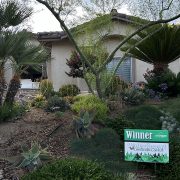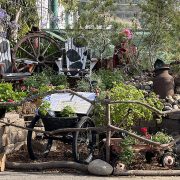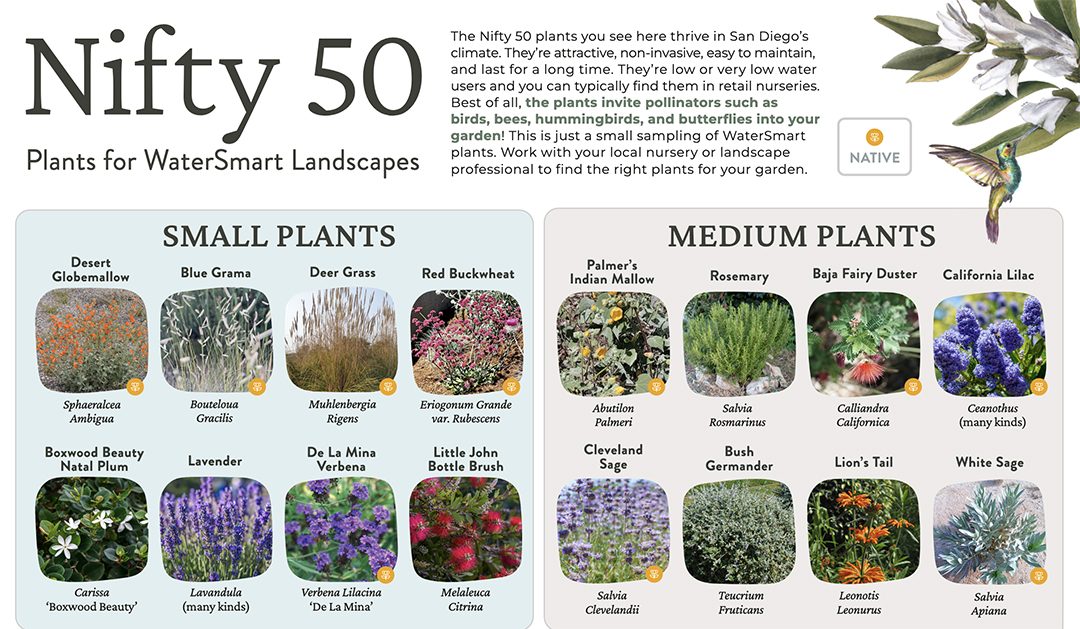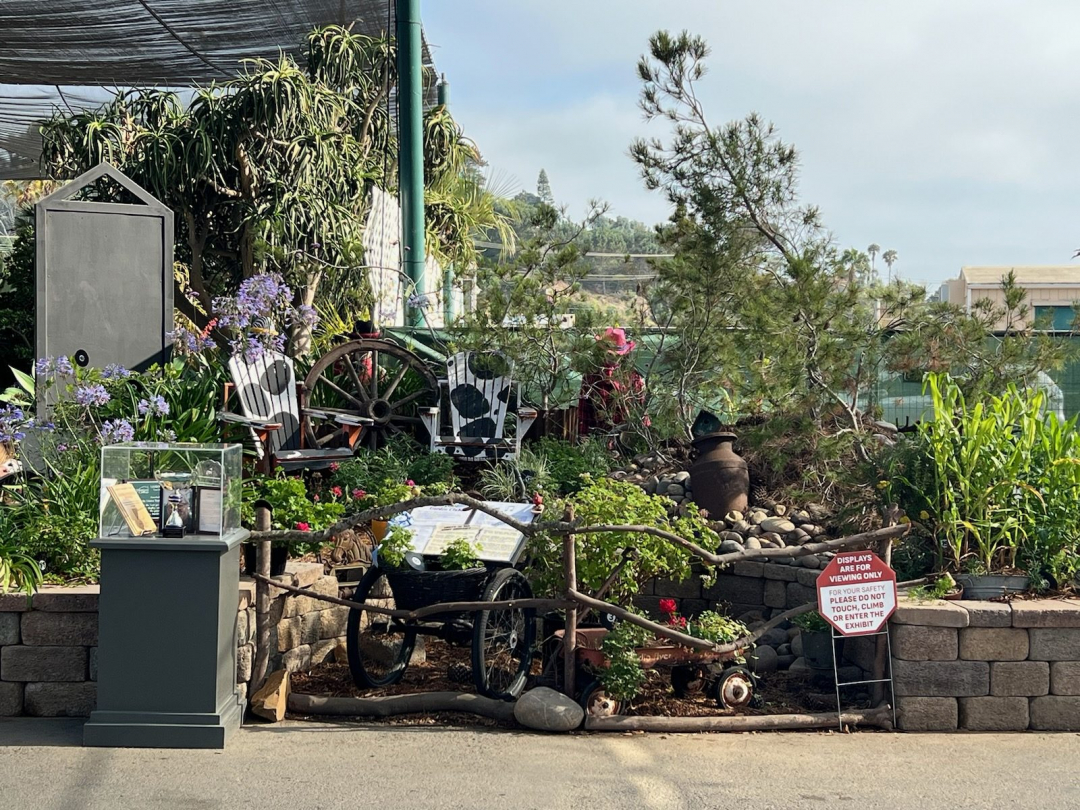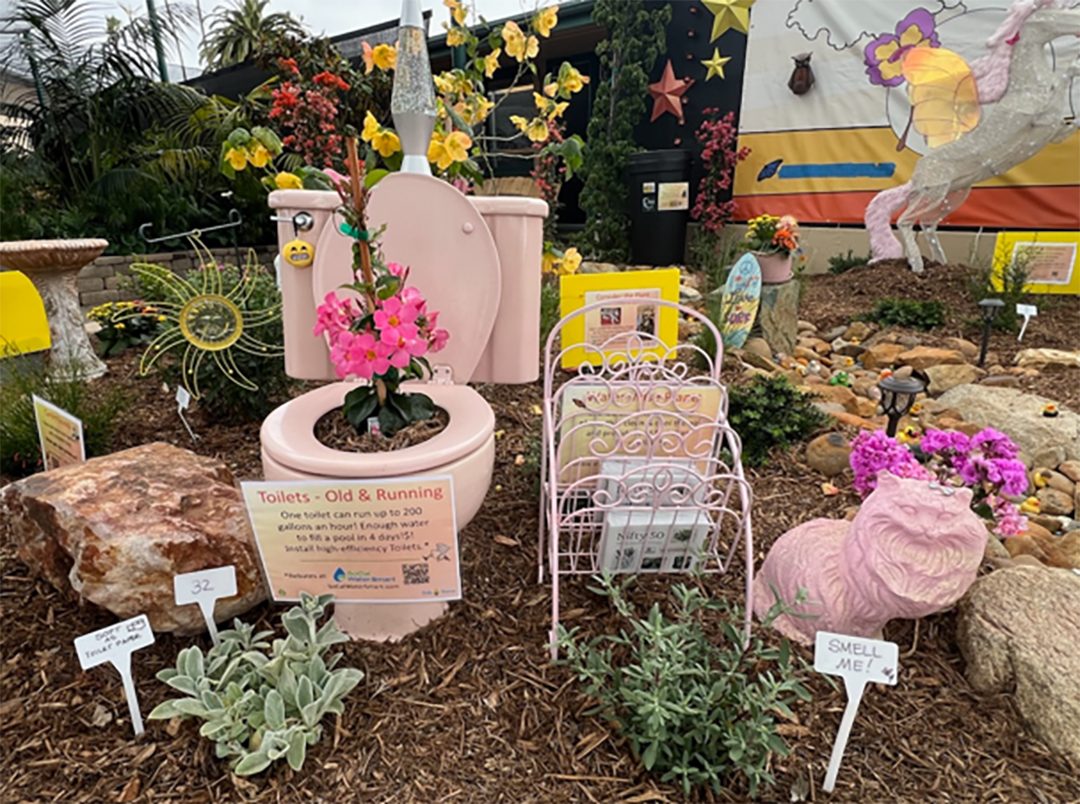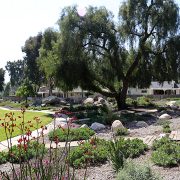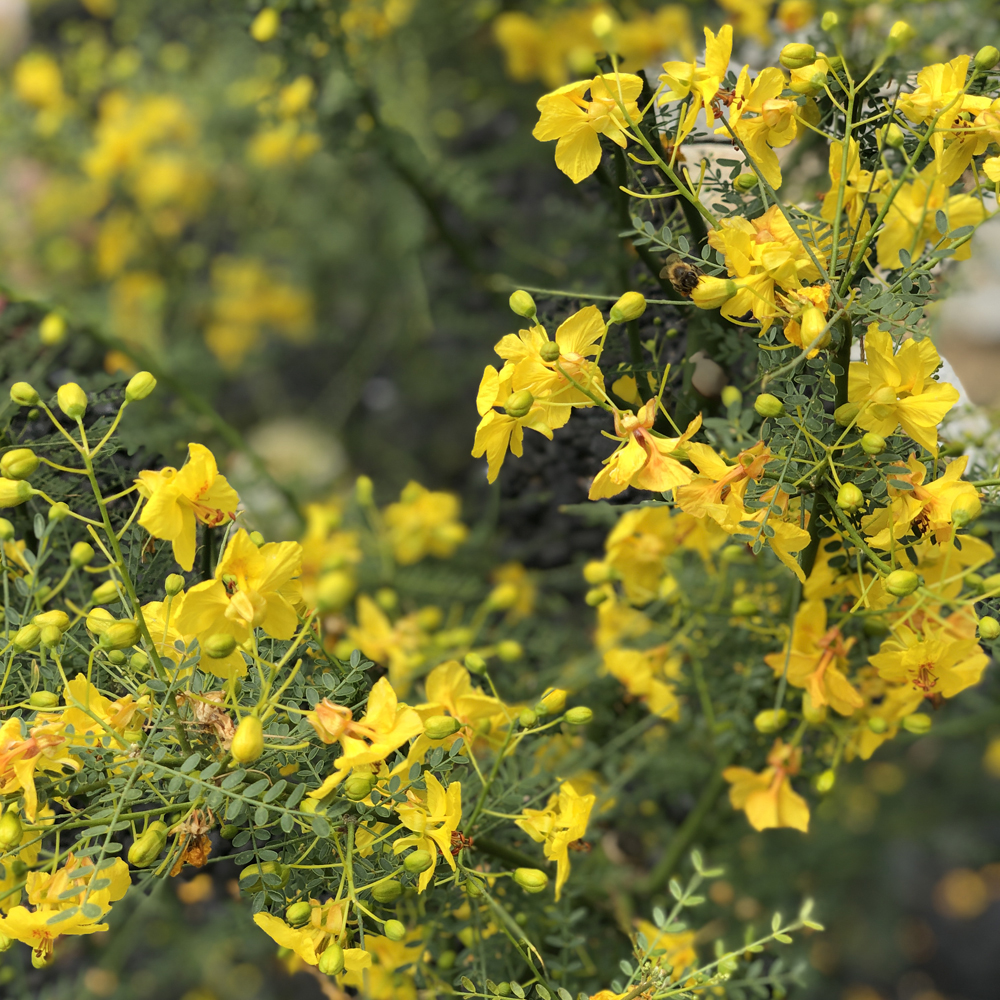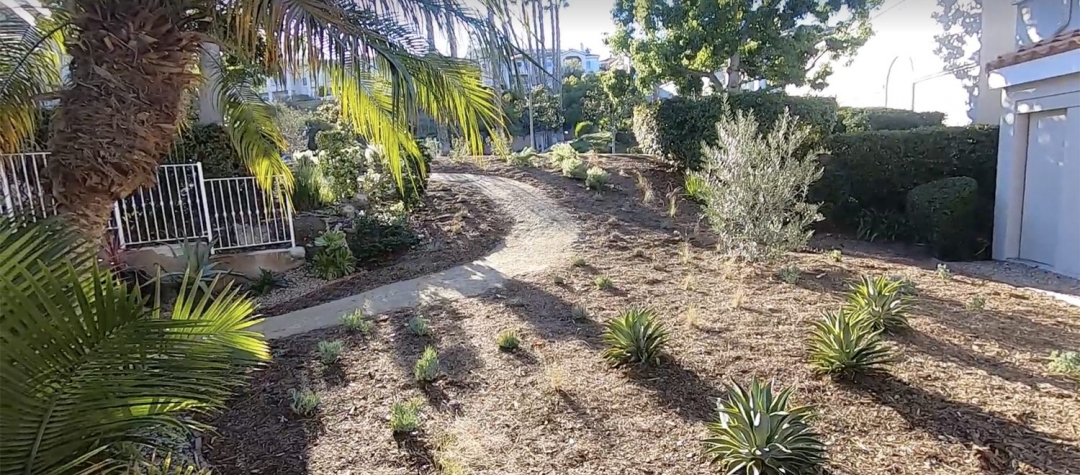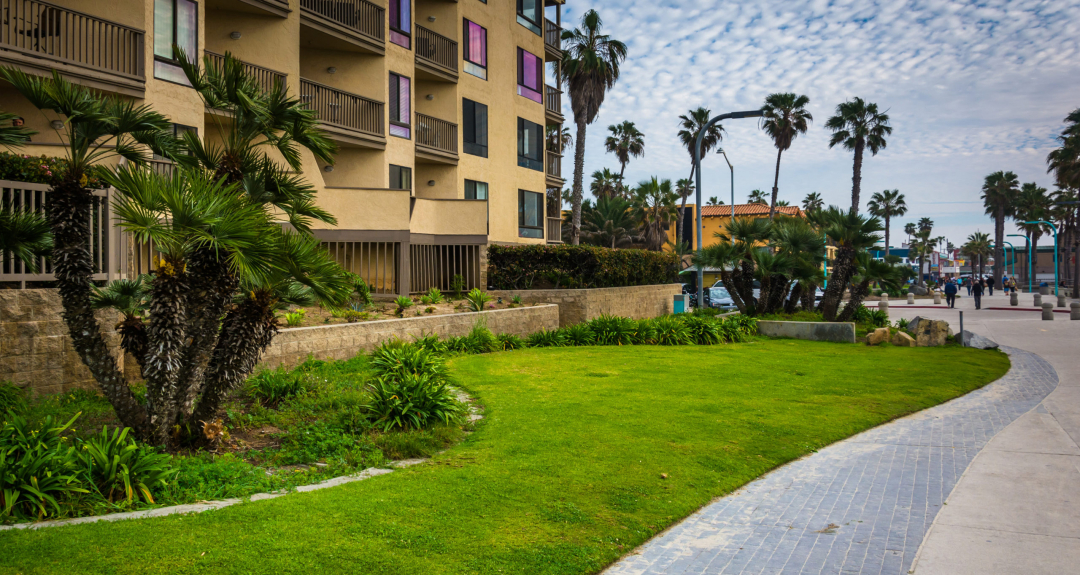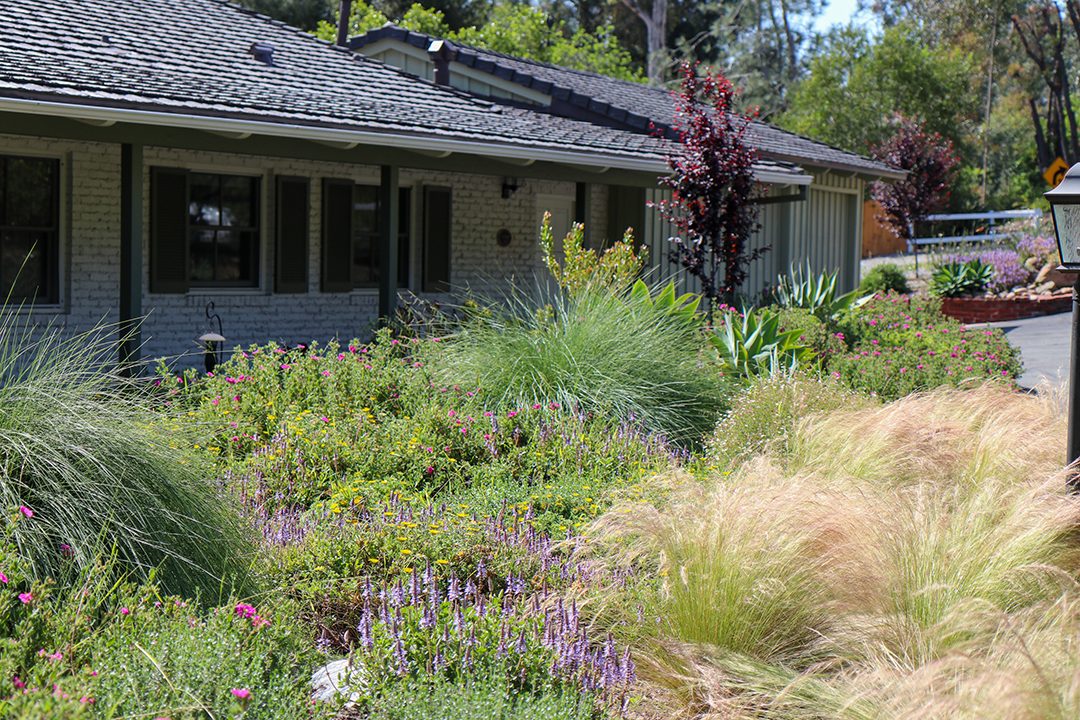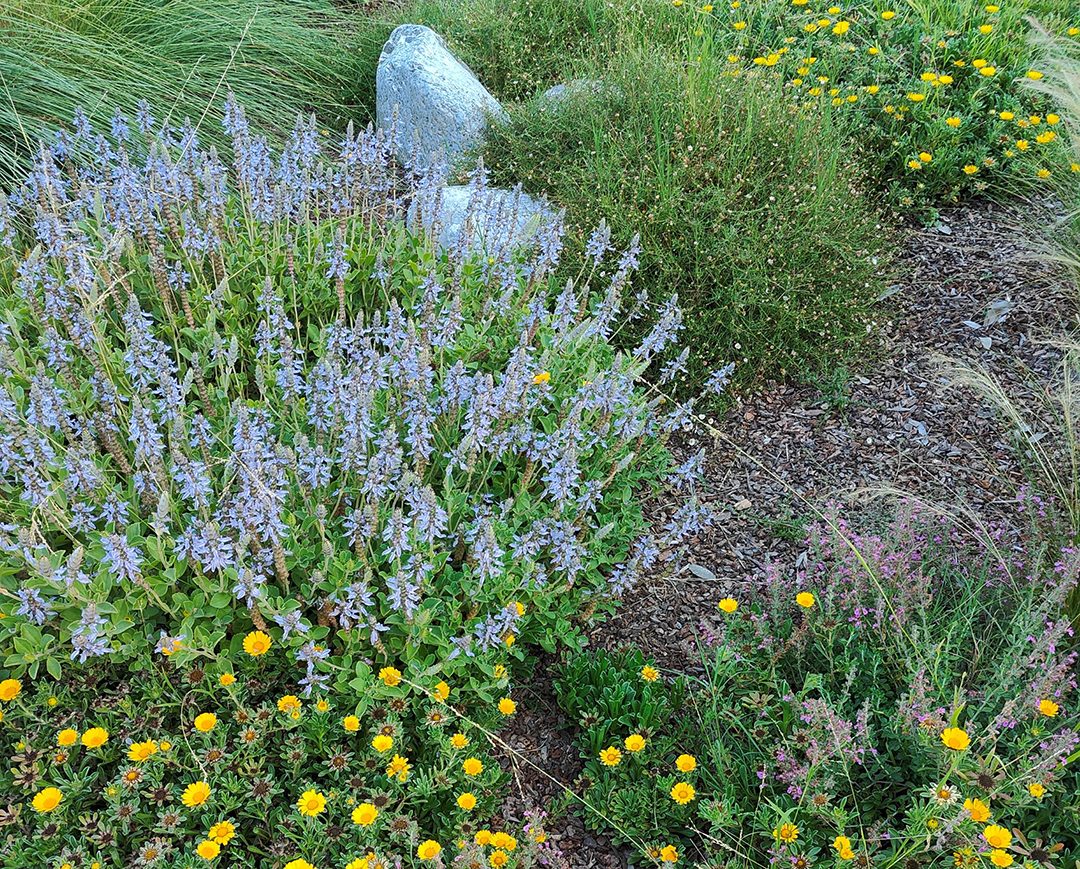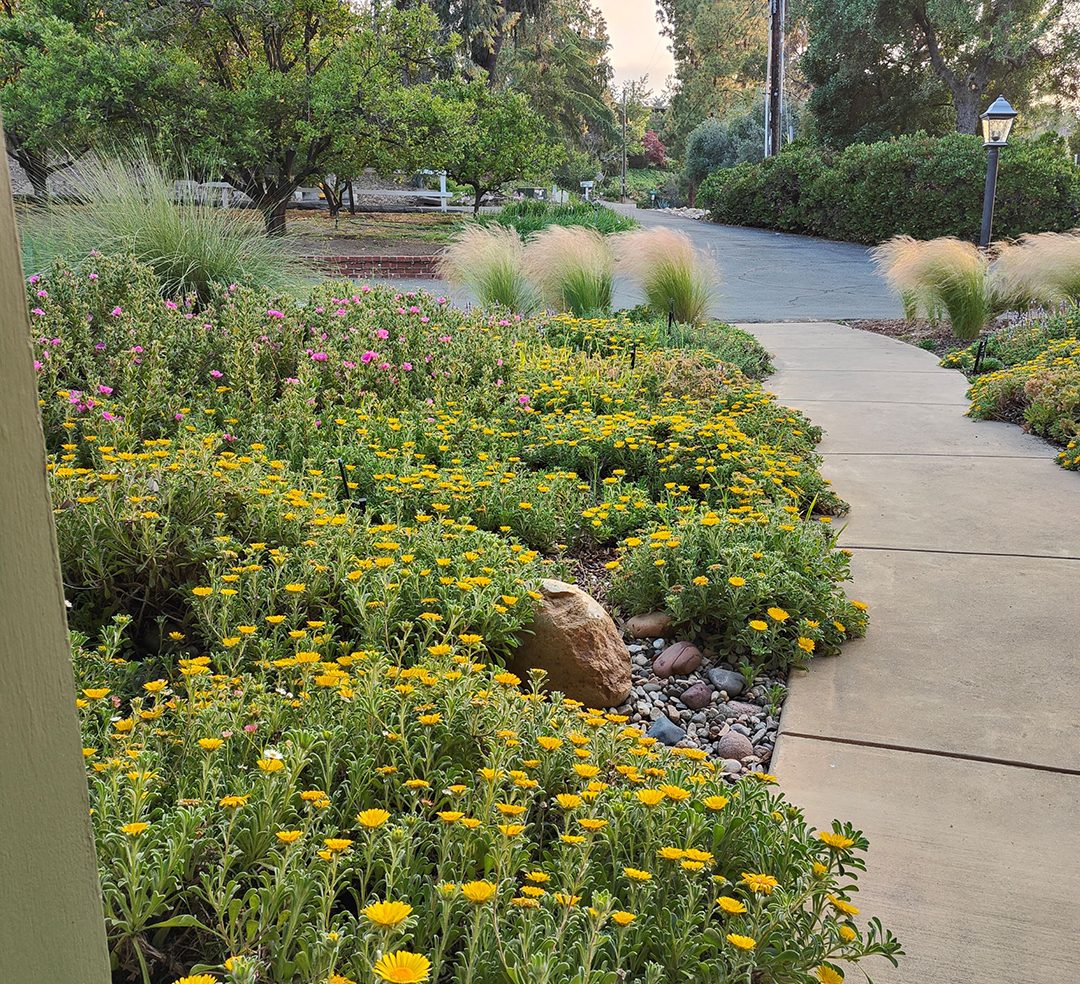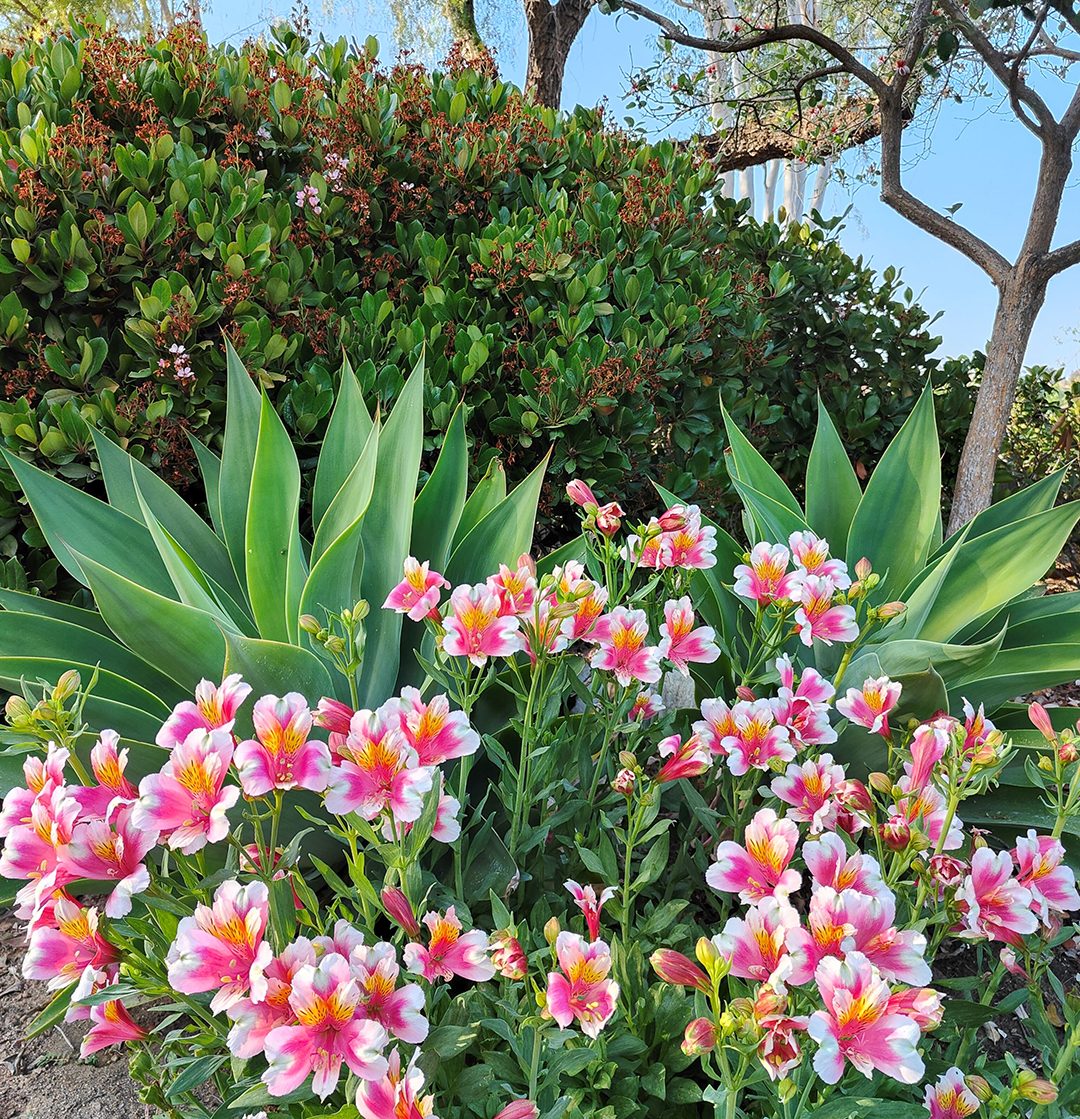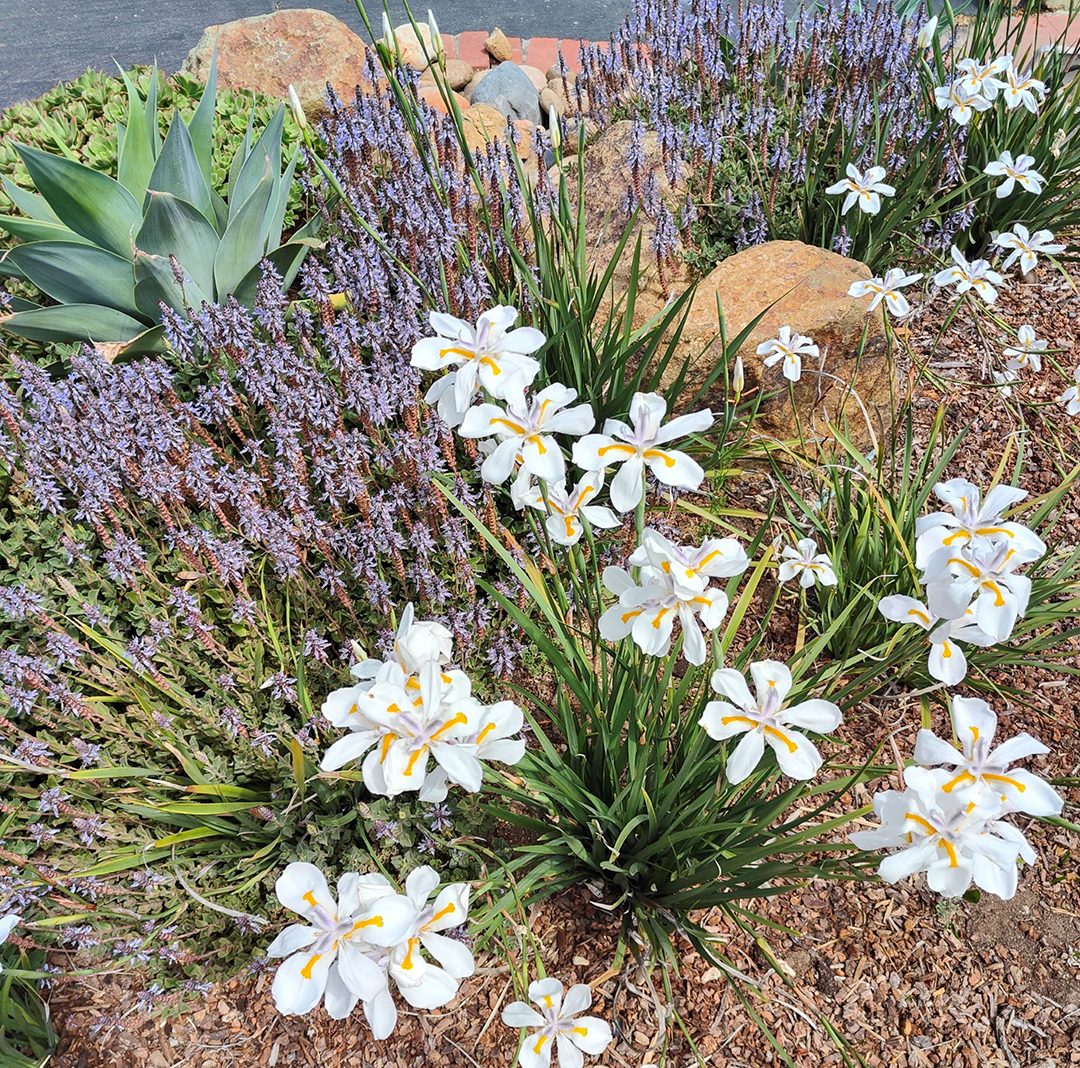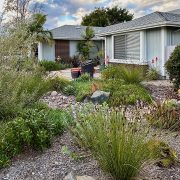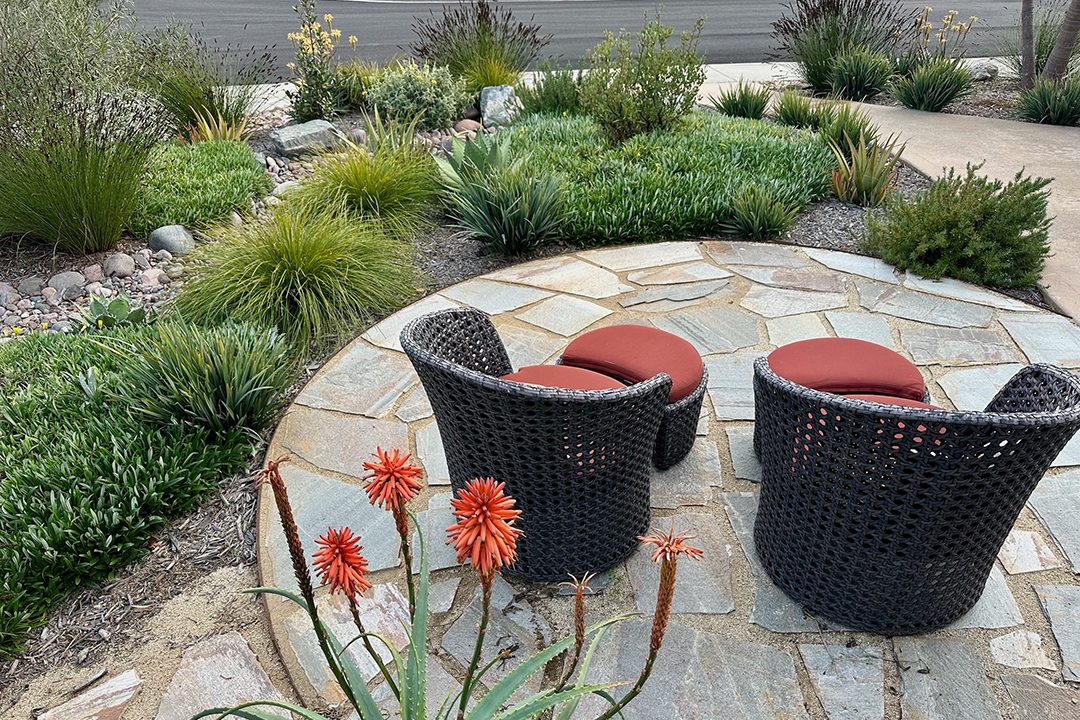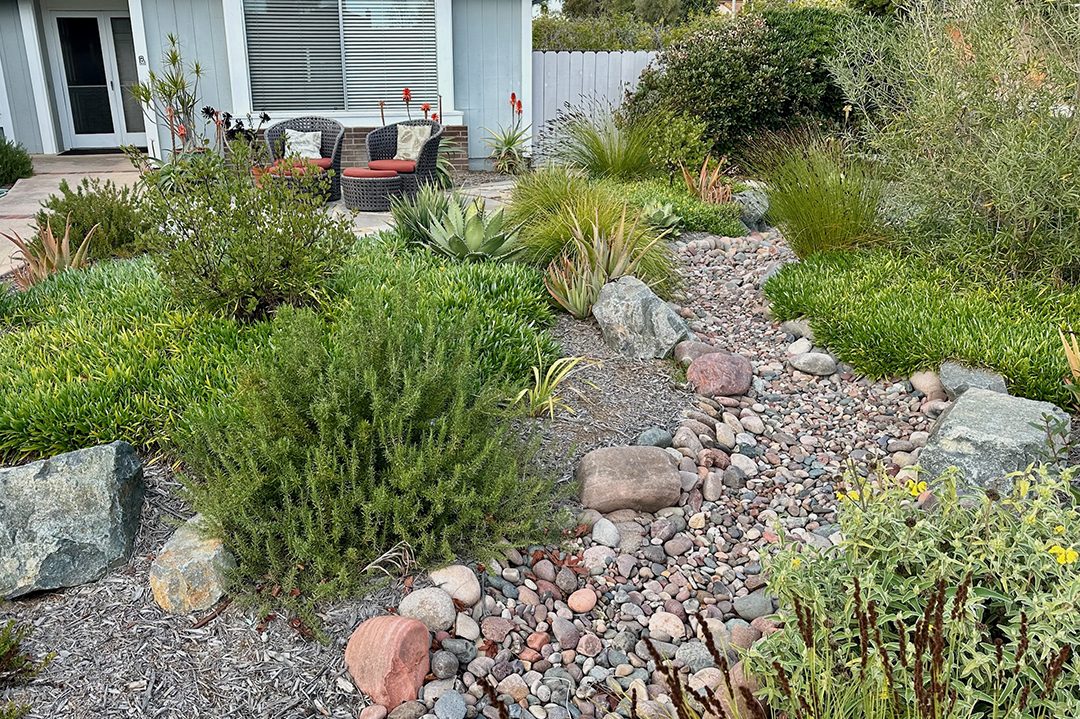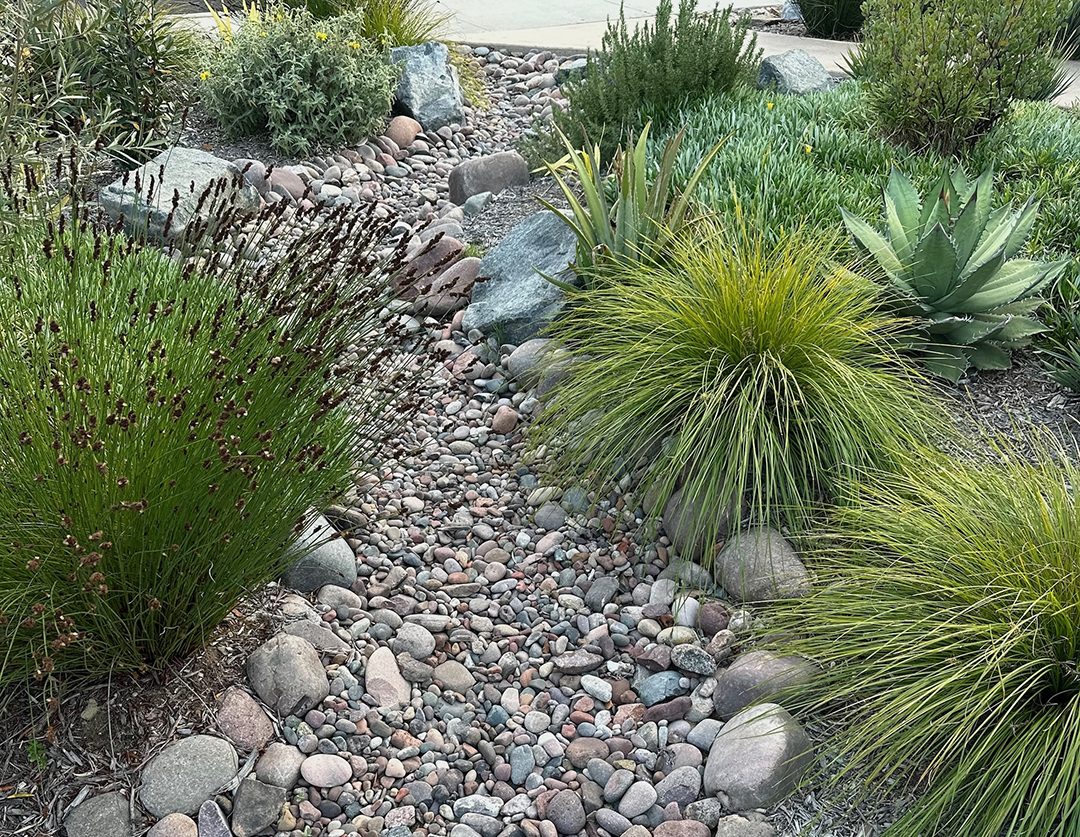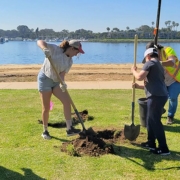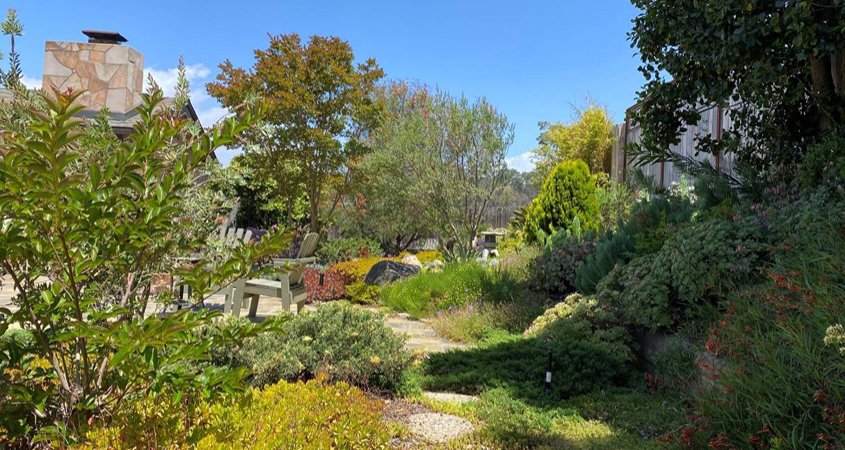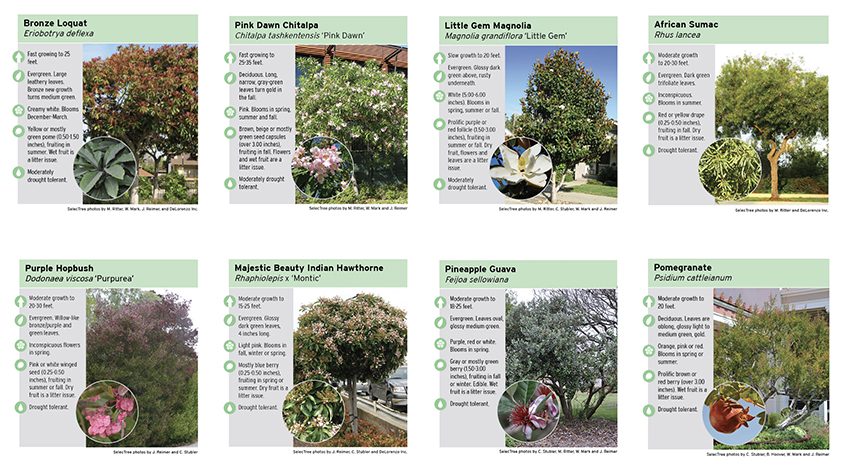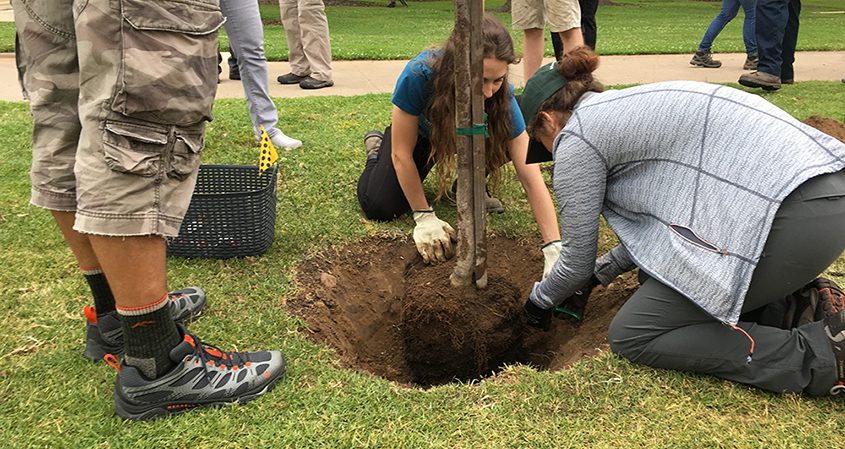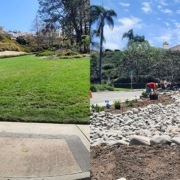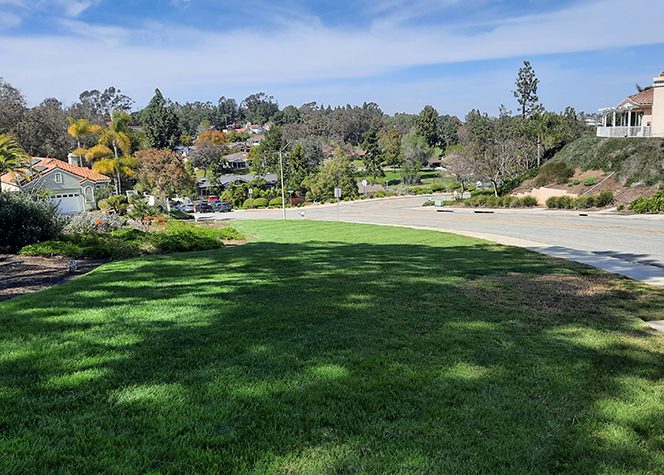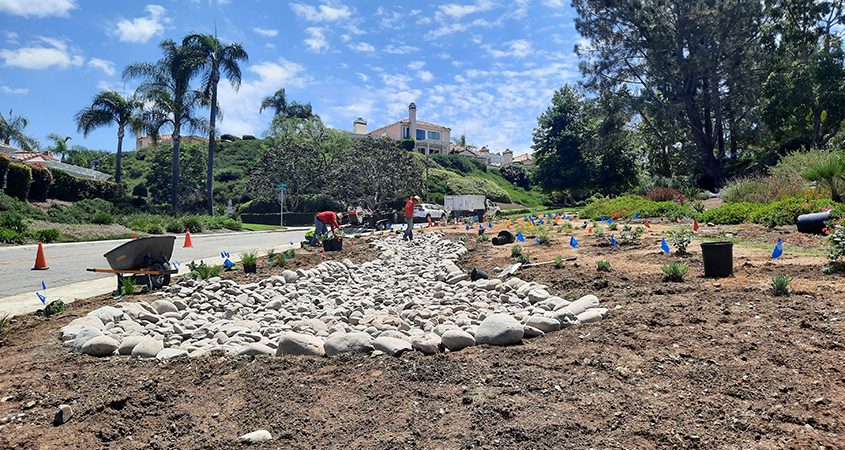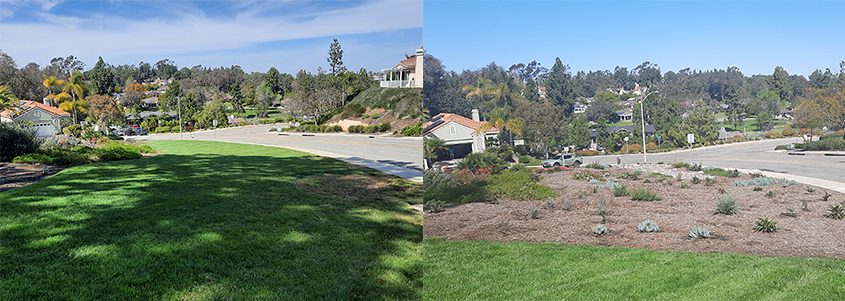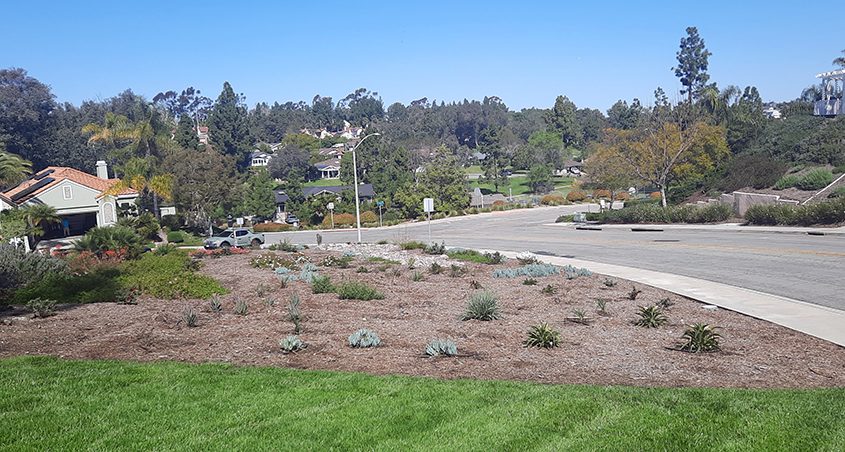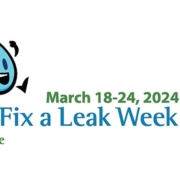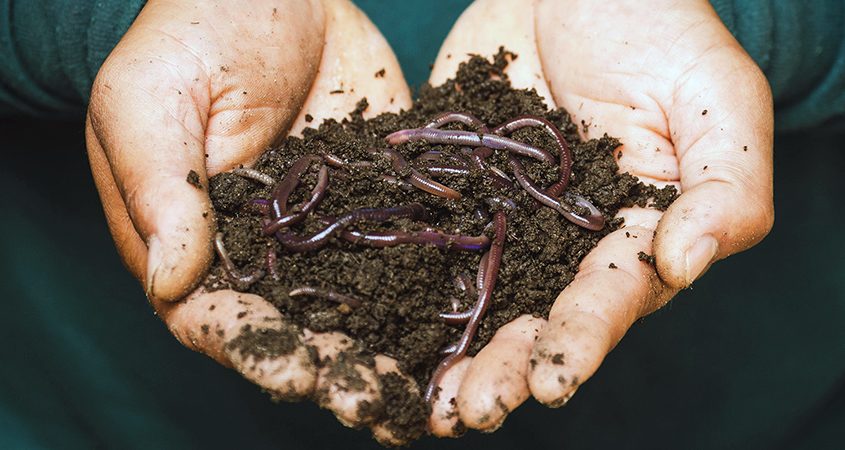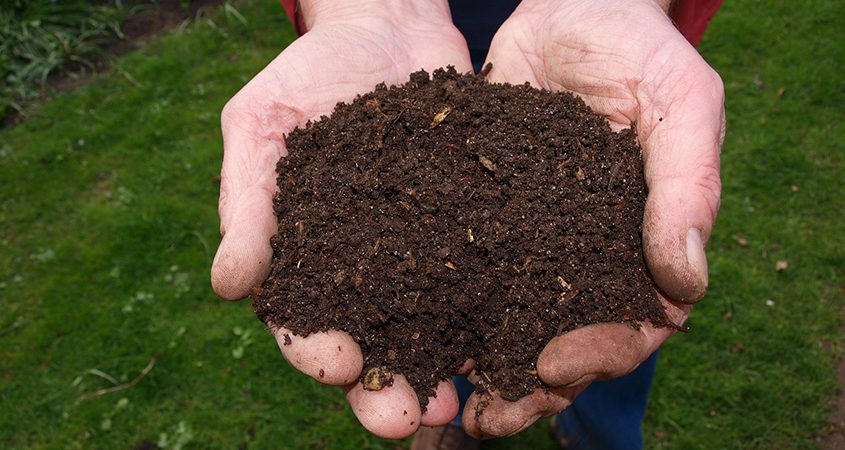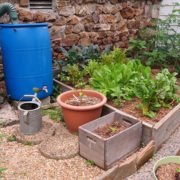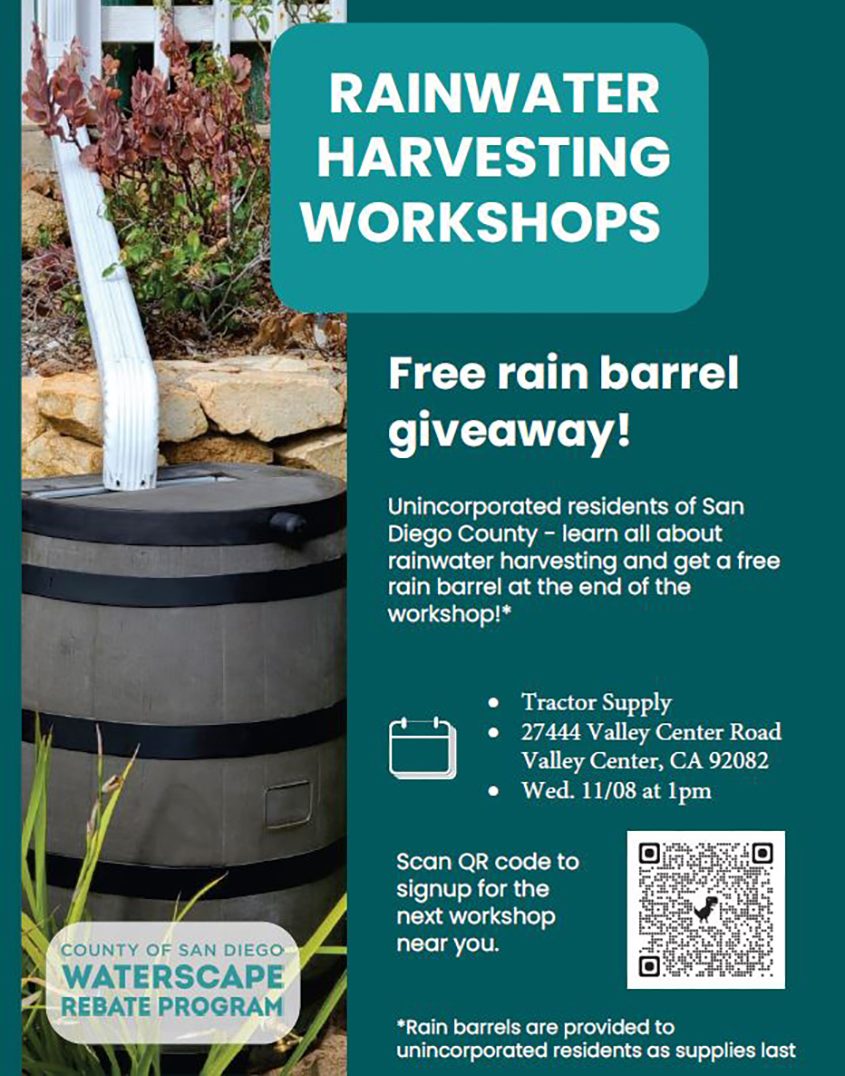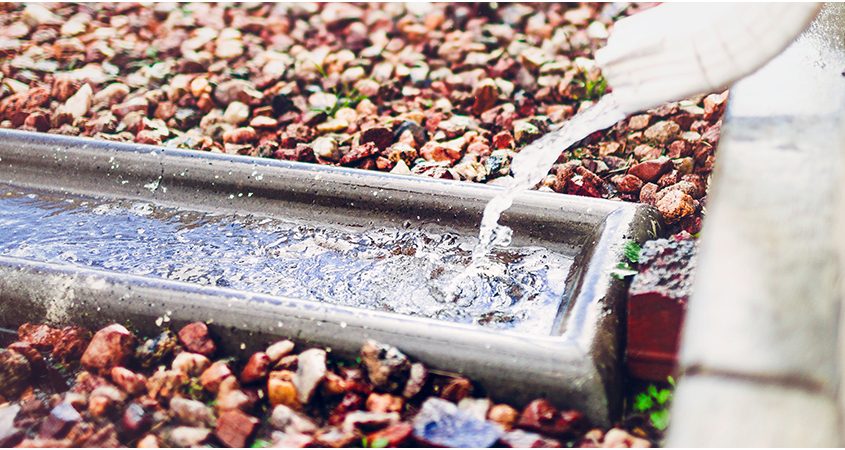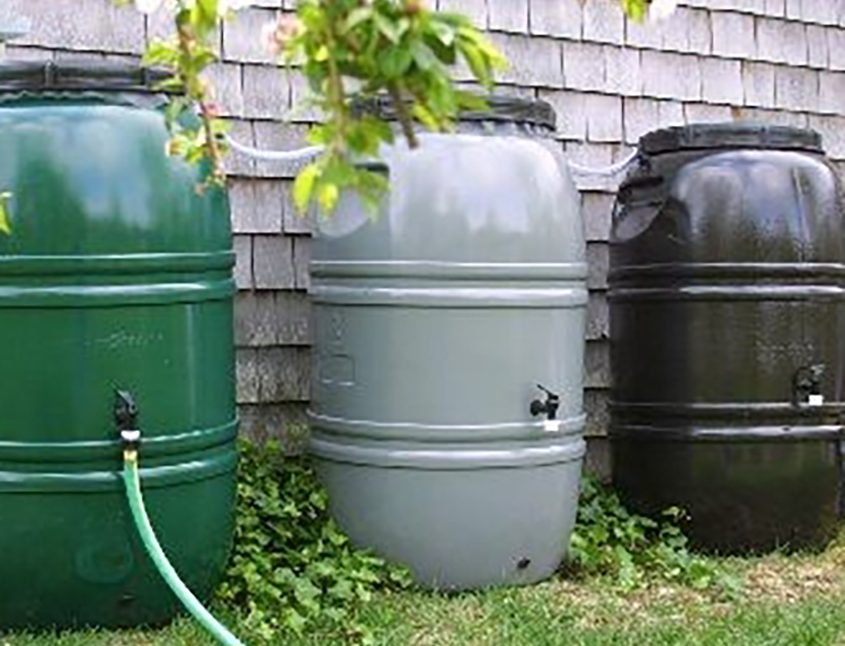Hard Work Pays Off for 2024 Escondido Landscape Contest Winner
When longtime Escondido residents Anita and Larry Palmer moved into their new home in 2016, they decided the lawns and water-guzzling plants in their front and back yards “would have to go.”
The result of their landscape makeover is the 2024 City of Escondido Landscape Makeover contest winner.
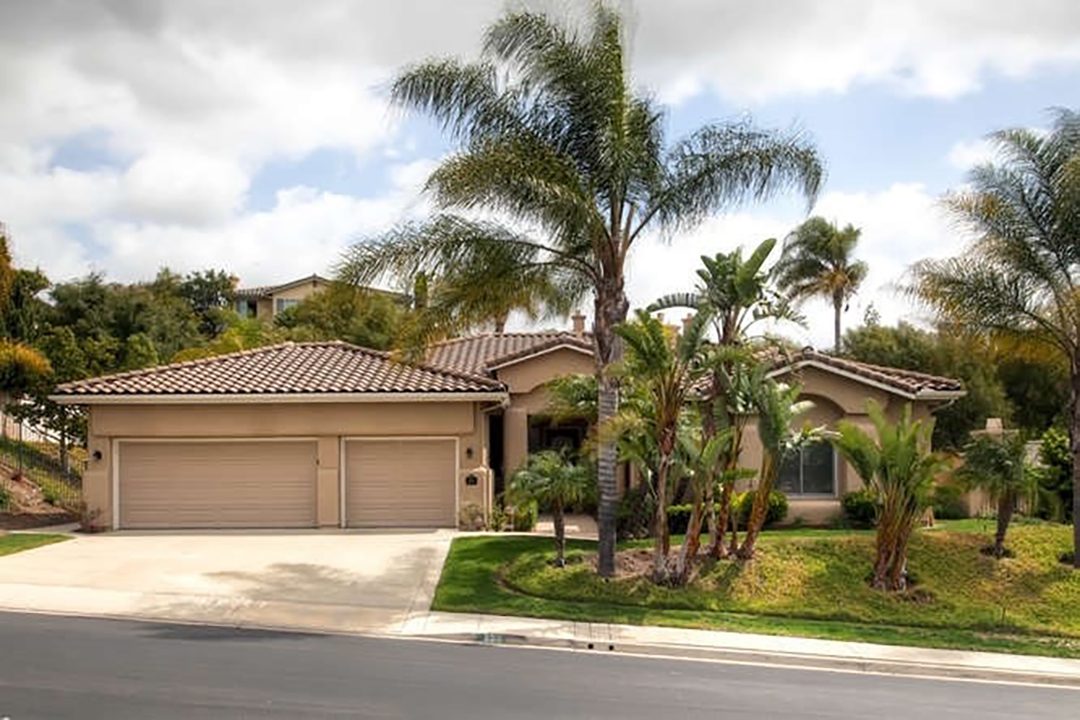
The Palmer home landscaping before its award-winning makeover. Photo: City of Escondido
The homeowners hoped to save the cost of watering and maintaining the grass and be part of the solution to San Diego County’s water challenges. The Palmers worked on designing a California-friendly landscape. After the existing lawn and plants were removed, they installed new hardscape and a water-efficient drip irrigation system. They planted their new landscape with succulents and cacti propagated from cuttings and from dividing plants.
Drought-tolerant plants used in whimsical underwater theme
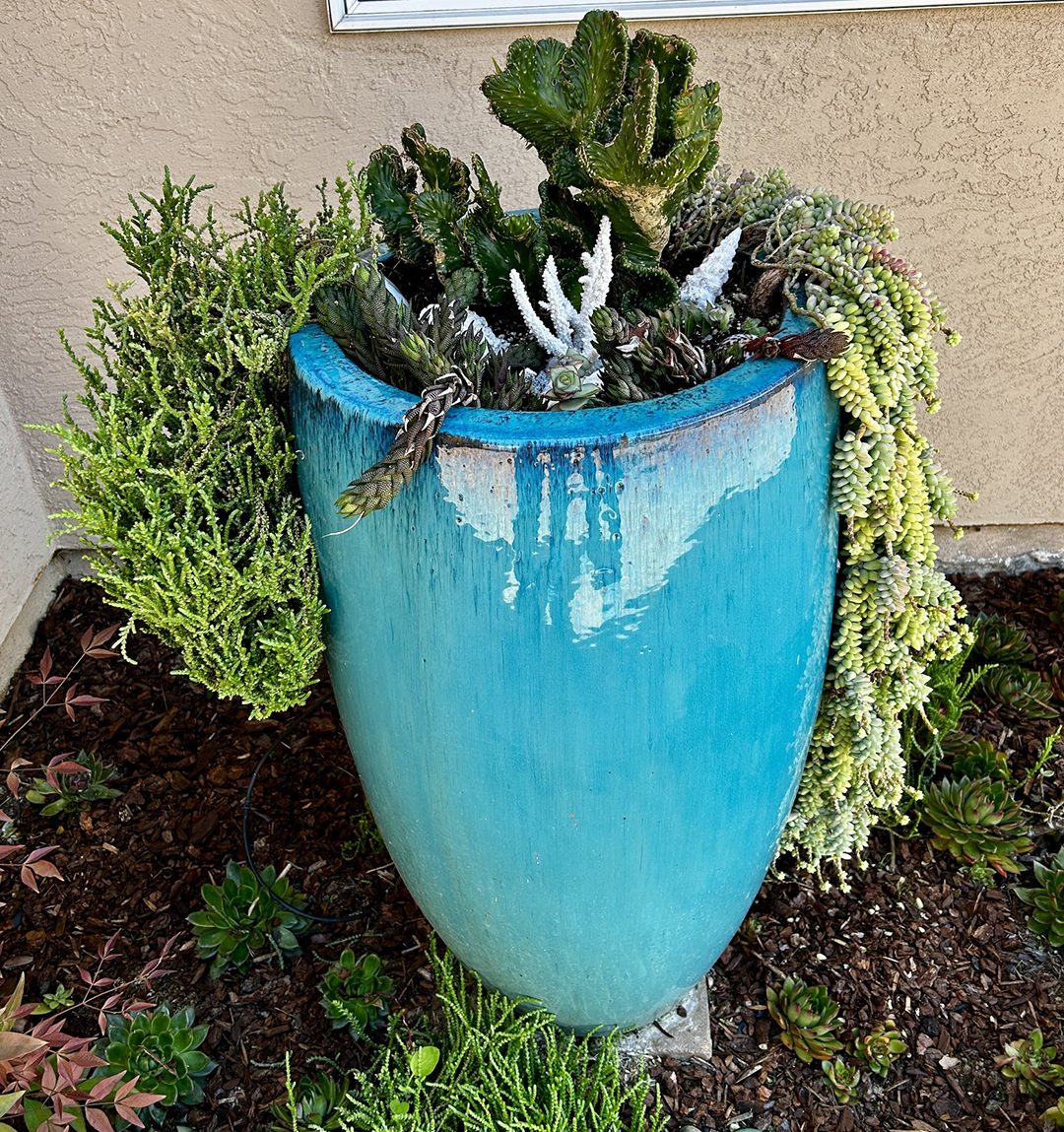
Seashells were added to compliment the plants in an underwater life theme. Photo: City of Escondido
Leaning into the whimsy of the underwater-esque scene created by their collection of drought-tolerant plants, the Palmers added a few seashells throughout the garden.
During their landscape transformation process, Anita and Larry enjoyed getting acquainted with their neighbors, sharing the plants they propagated, and watching the neighborhood kids peek into the garden in search of hidden fish and mermaids.
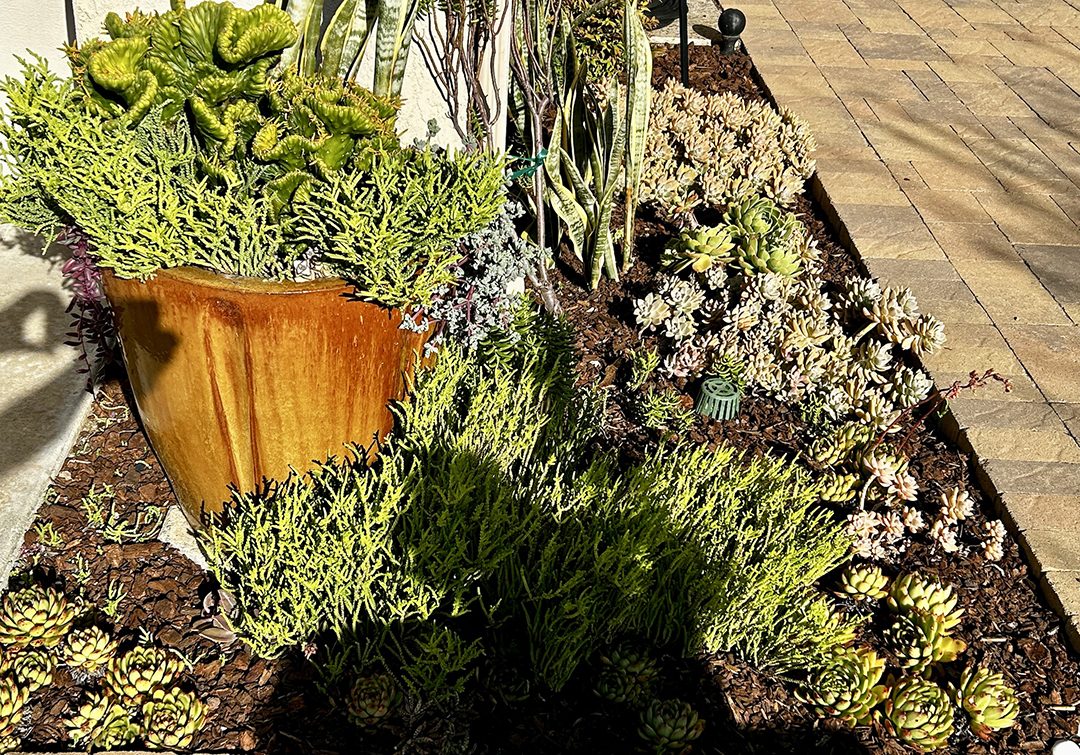
The new landscaping requires very little irrigation, and none during rainy months. Photo: City of Escondido
Today, the Palmers enjoy a landscape that requires little maintenance and is vibrant with color year-round for them and their neighbors. It serves as a source of inspiration to their fellow water-savvy community members. During rainy months, the Palmers can turn their outside water irrigation off completely.
The Palmers have seen a gradual transformation as neighbors follow their example by adopting low-water-use landscaping at their homes. “No two yards that have dry landscaping are the same,” said Anita Palmer. “It’s whatever works for each family.”
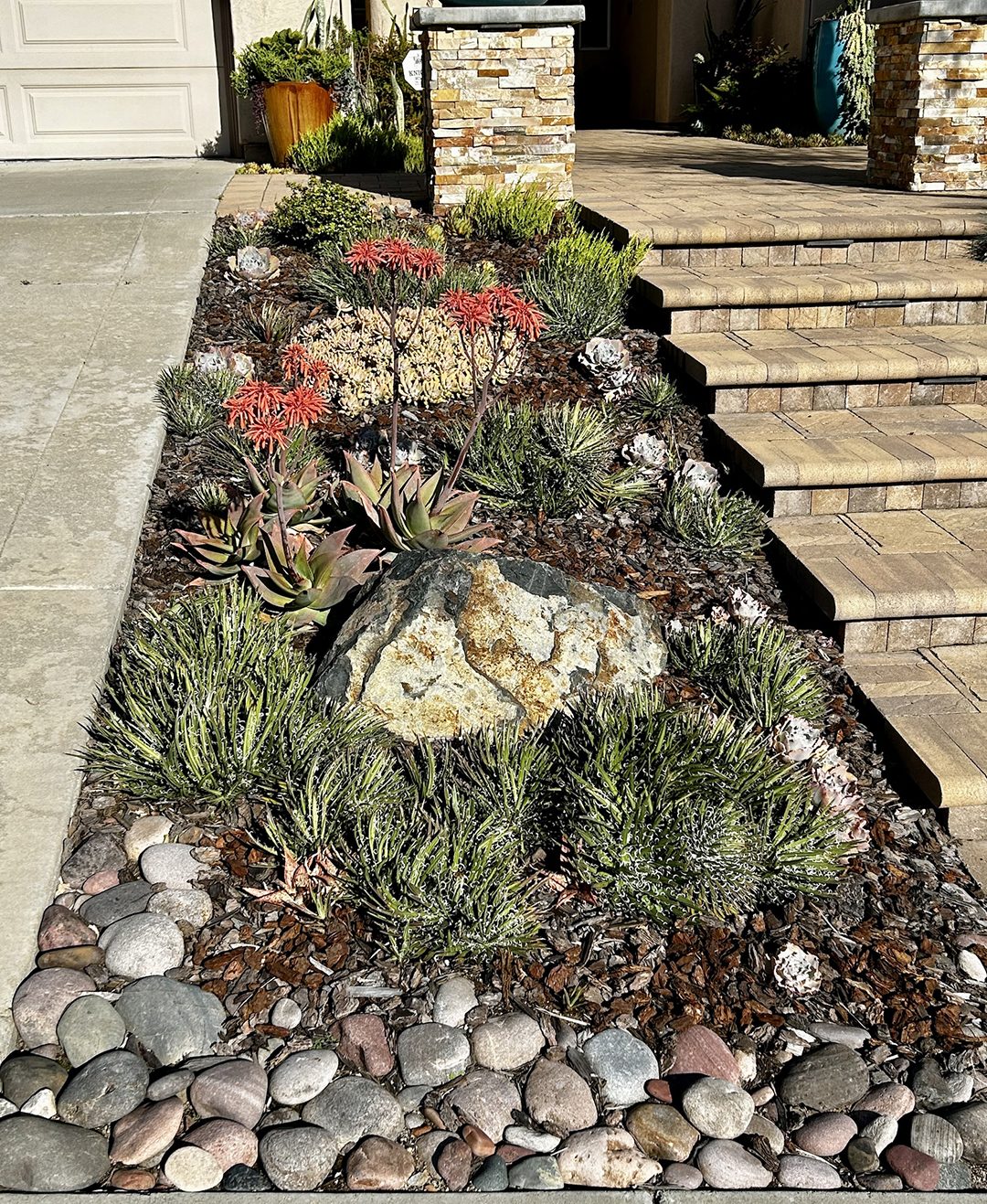
The Palmers used succulents and other plants, many of which they propagated themselves from cuttings. Photo: City of Escondido
The Palmers used varieties of Aeoniums, Aloes, Bryophyllum, and Crassula varieties (Jade Plants), Echeveria, Euphorbia, Gasterias, and Graptoveria, which are hybrids of Echeveria and Graptophyllum succulents, Haworthia (Zebra cactus), Sansevieria, Senicio, and sedums, including Donkey’s Tail.
They planted purple statice, ornamental Blue Fescue grass, Mediterranean fan palms, and Desert Museum Palo Verde trees.
City of Escondido Awards Honorable Mention
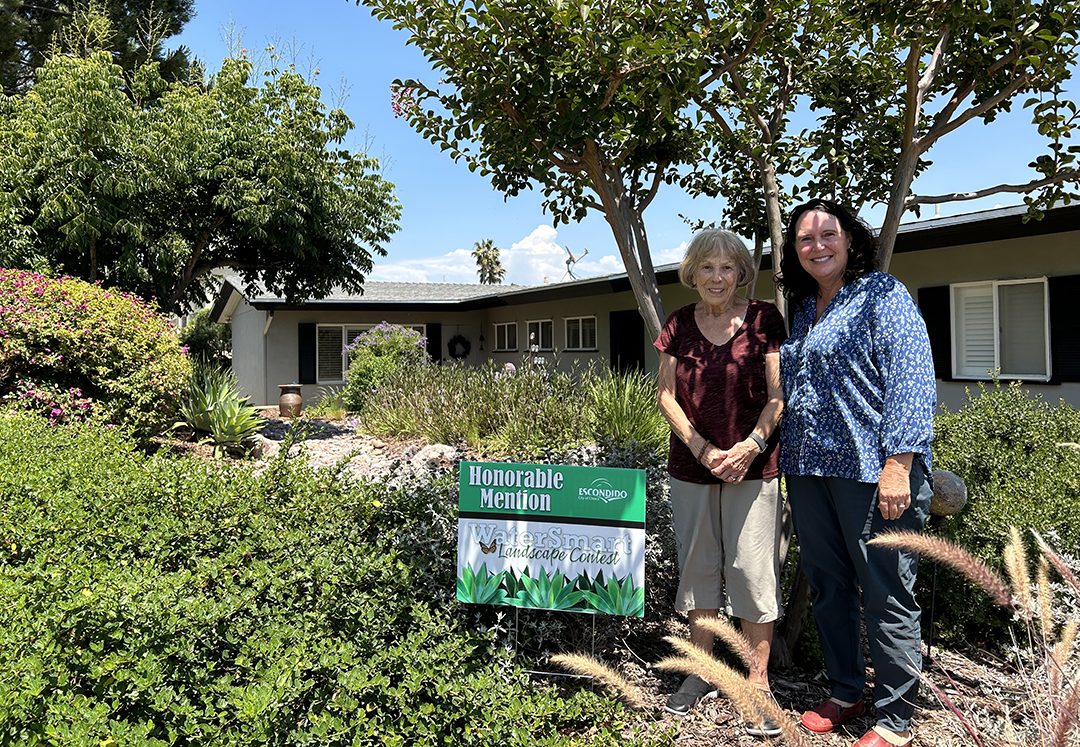
Patricia Jablonski (left) with friend Kay Campbell. The women worked together on Patricia’s Honorable Mention landscape project. Photo: City of Escondido
The City of Escondido selected Patricia Jablonski’s contest entry as its 2024 Honorable Mention. Jablonski has continuously evolved her landscape since the family moved into the home in 1971.
Once the site of a small but thirsty avocado grove and numerous roses, the yard now features a dry riverbed, a serene rock garden for contemplation, and a variety of succulents and drought-tolerant natives that thrive on a timed drip irrigation system. The garden is a welcoming space where Jablonski often spends time with friends, family, and neighbors.

